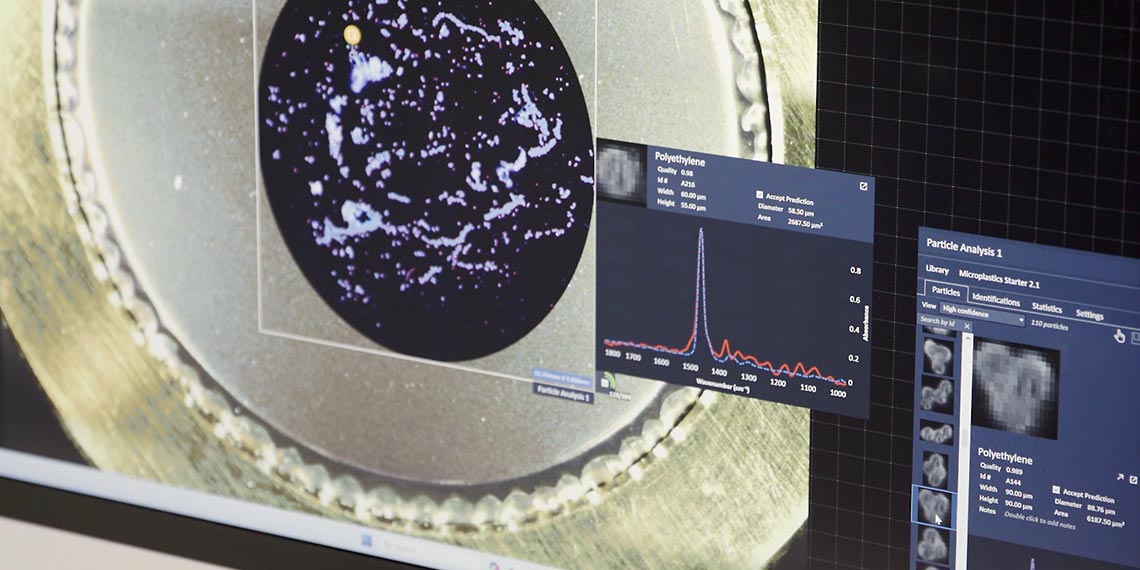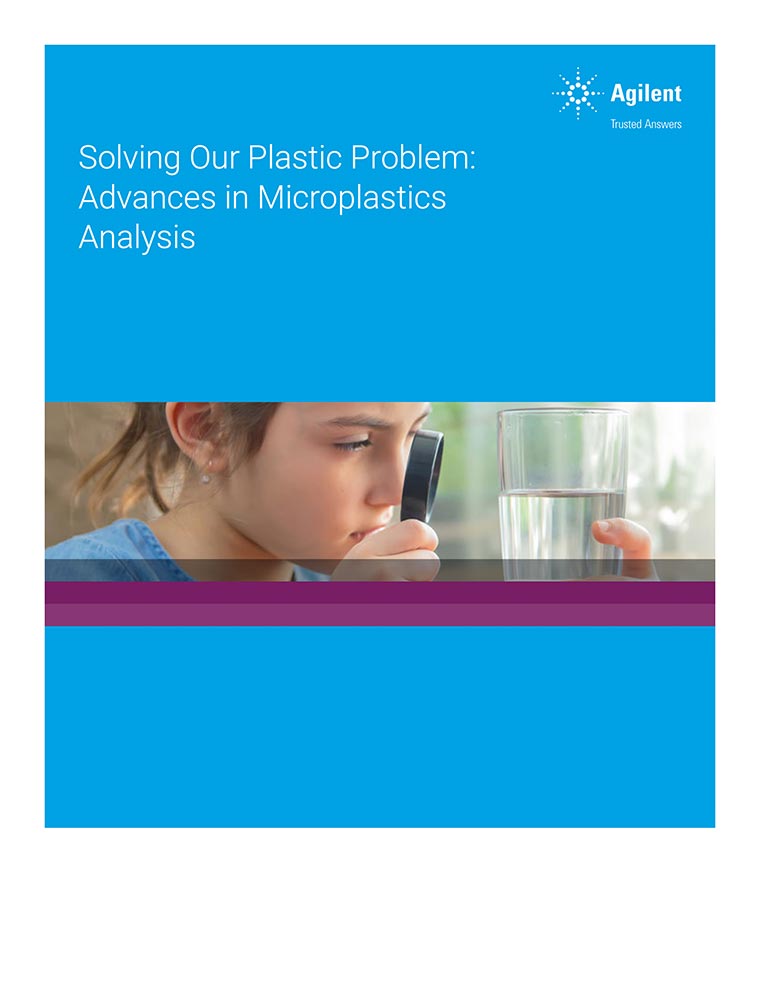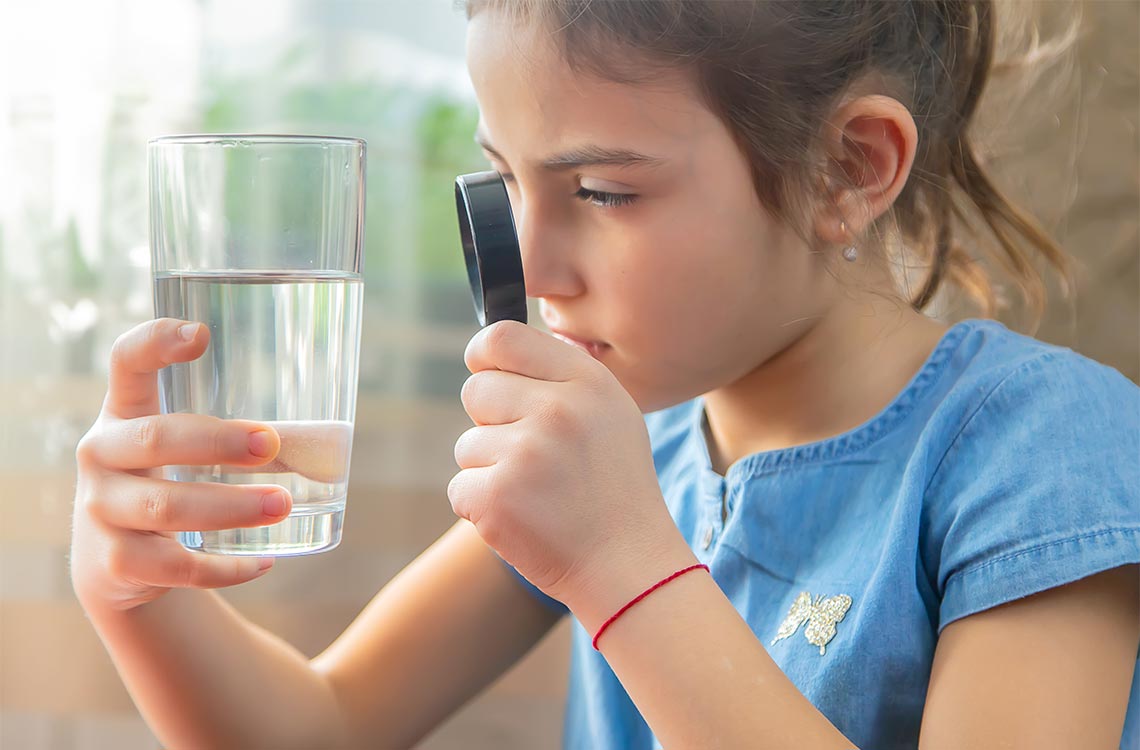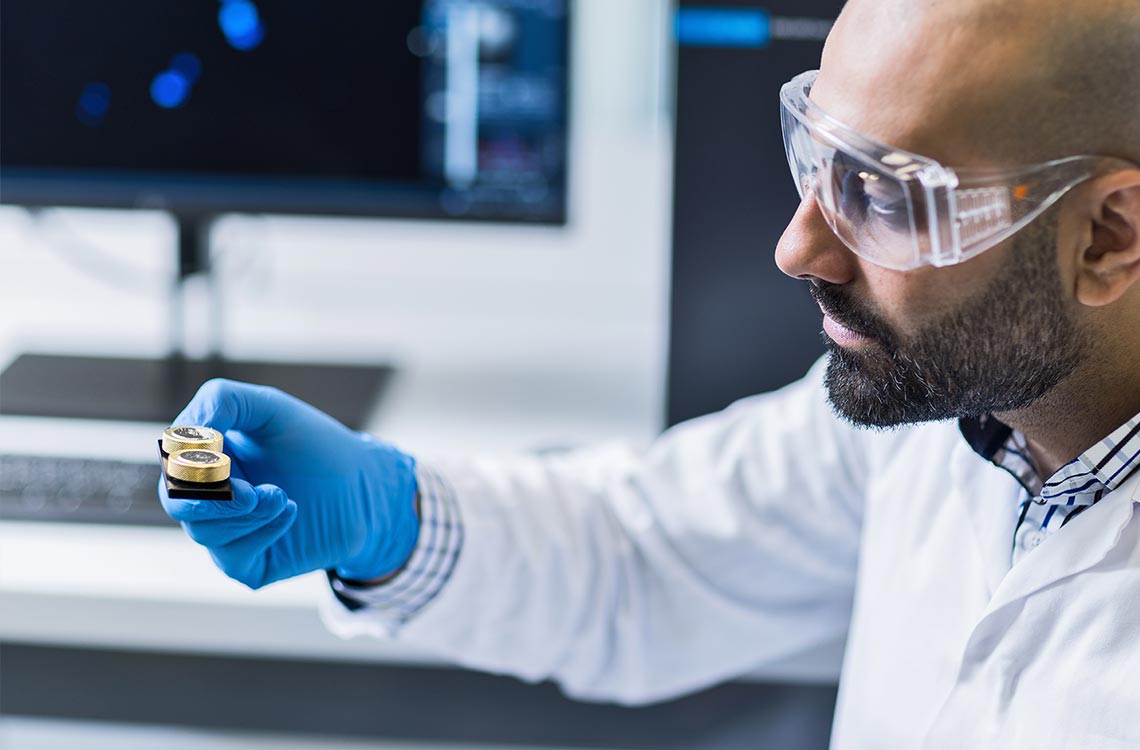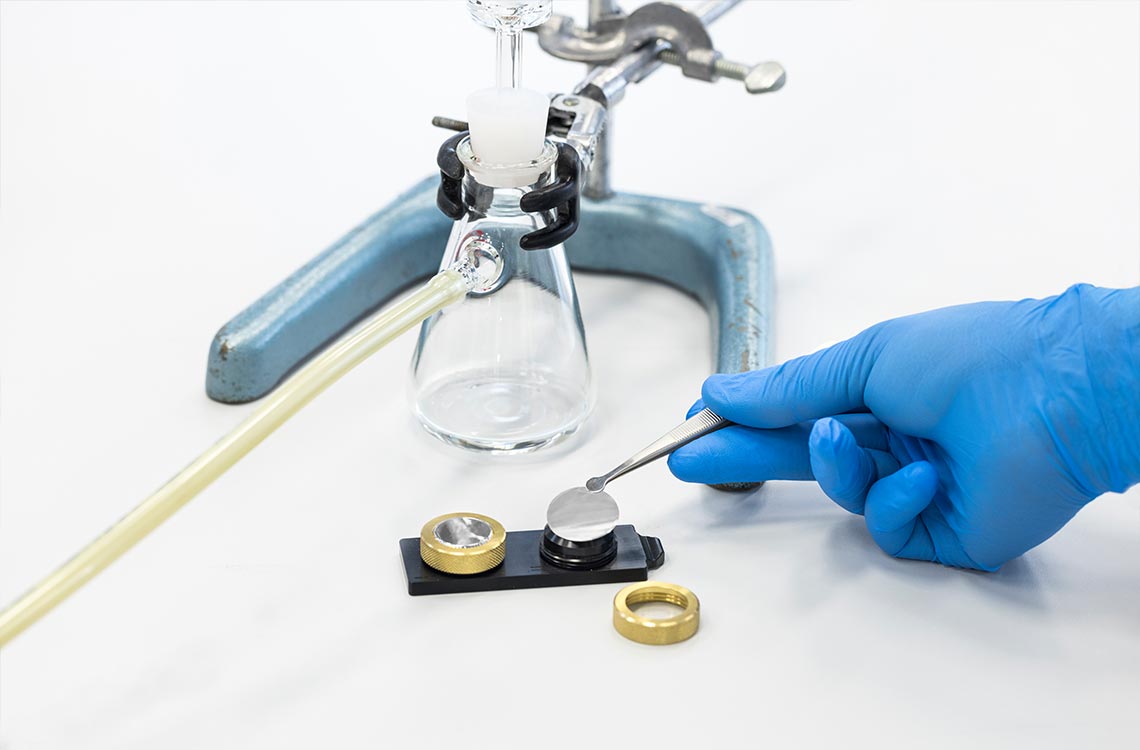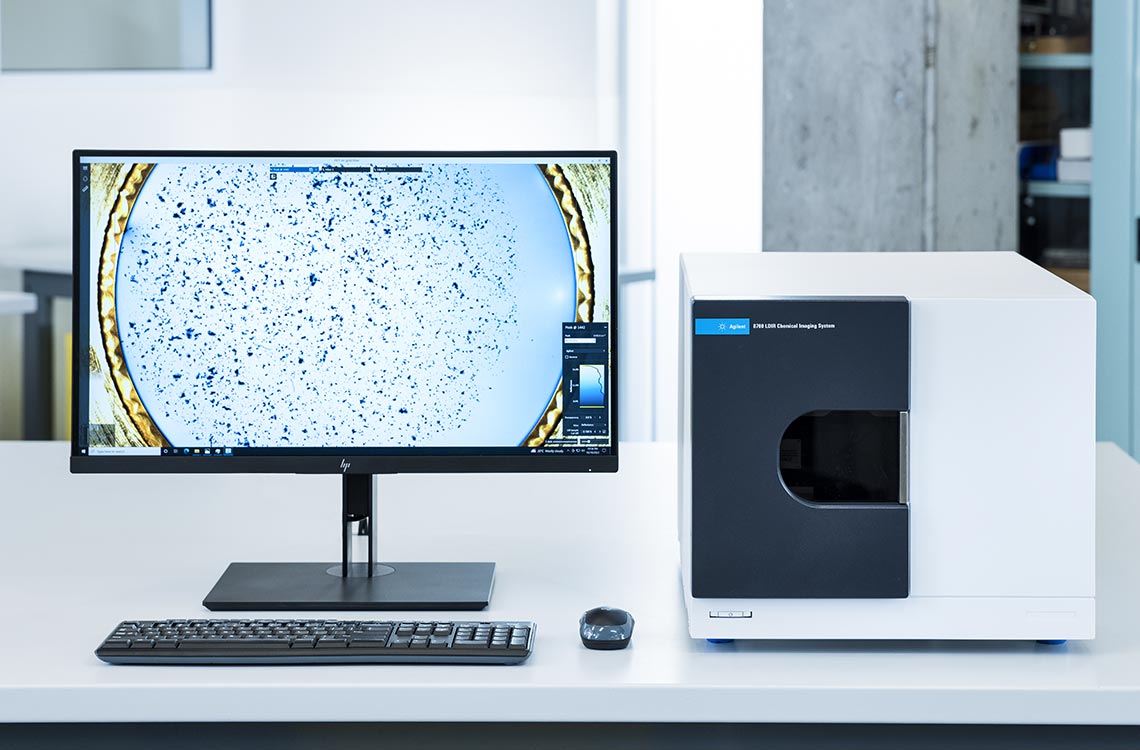Spend Less Time Operating Instruments and More Time Analyzing Results
Agilent 8700 LDIR chemical imaging system with Clarity software
Press play and walk away
Microplastics studies generate data from thousands of particles, and managing such large amounts of data can be both time and labor intensive. But that’s all about to change.
The Agilent 8700 Laser Direct Infrared (LDIR) system is the most automated microplastics analysis option available. In fact, it takes less than 15 minutes to insert the sample, set up the method, and start your analysis. You can then walk away and return when scanning is complete—with no intermediary steps.
What’s more, the system’s double filter holder lets you automatically test two samples in sequence, saving even more time. No other system is as hands off, leading to greater lab productivity. For example, if you run four samples per day, it would take about one hour of setup time versus the entire day with other imaging systems.
-
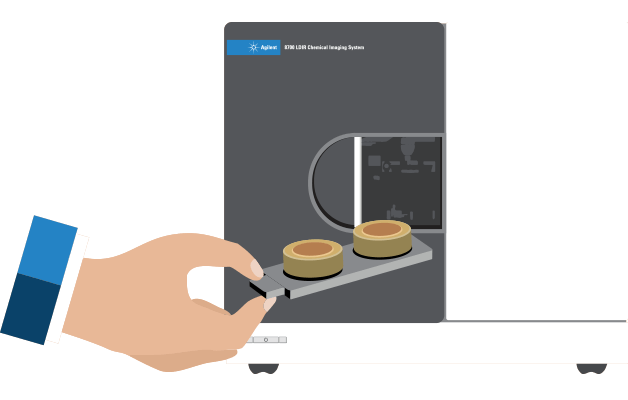
Load the instrument
Two sample positions boost throughput without increasing your hands-on time.
-
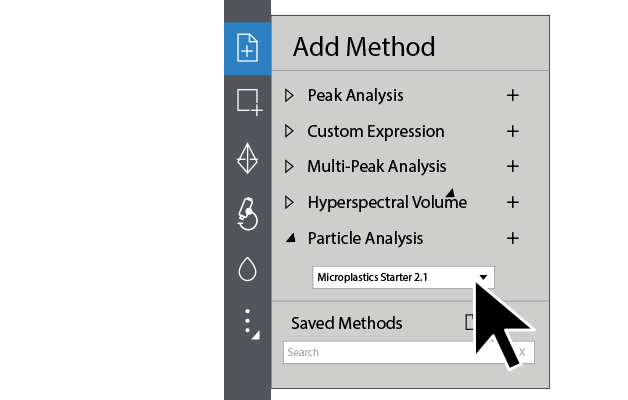
Select your method
You can assign a different scan method to each sample—even in the same run.
-

Press play and walk away
Scanning, data processing, and data analysis take place automatically.
Calculate your savings
What could automating microplastics data management mean for your lab’s business? To see how your savings can add up, enter your values into the blue boxes.
|
Select currency
|
|
|---|---|
| Samples per day | |
| Analyst cost per hour | |
| Results | Agilent 8700 LDIR | Other microplastics analysis systems |
|---|---|---|
| Analyst time per year (hours) | ||
| Analyst cost per year |
Figures in calculator based on a presumption of 260 workdays per year.
Estimated total savings: per sample, per year
Bottom-line benefits of LDIR
Analyst time per sample
15 minutes versus 2 hours

Time in front of the instrument
Fully automated for unattended operation
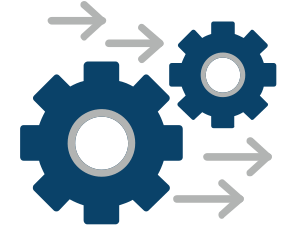
Analyst cost reduction
60%

Updated software increases analytical capabilities while reducing hands-on time
Agilent Clarity software, together with the Agilent 8700 LDIR chemical imaging system, delivers a fast, automated workflow for detecting and identifying microplastics. So your lab can maintain its reputation for timely, accurate microplastics data. This software update lets you:
- Locate, image, measure, and identify microplastics without exporting data to external software.
- Examine results in detail where a deeper understanding is required.
- Archive data and images with ease and move them to a storage location of your choice.
Featured resources
Watch our webinars
More microplastics resources
Take a deeper dive into performing large-scale microplastics studies and monitoring activities that require fast data provision.
Achieving accurate microplastics characterization
Invisible plastic pollution is receiving increased attention from government bodies and academic institutions. This eBook highlights current challenges in microplastics analysis and takes an in-depth look at tools and technologies to help you better characterize these compounds.
Download eBook
Collecting and preparing microplastics for LDIR analysis
Sample preparation is the key to collecting high-quality data about microplastics in environmental waters. This technical overview explains how the 8700 LDIR “on-filter” workflow simplifies the final filtration stage of sample preparation—enhancing efficiency, lowering costs, and improving data accuracy.
Read now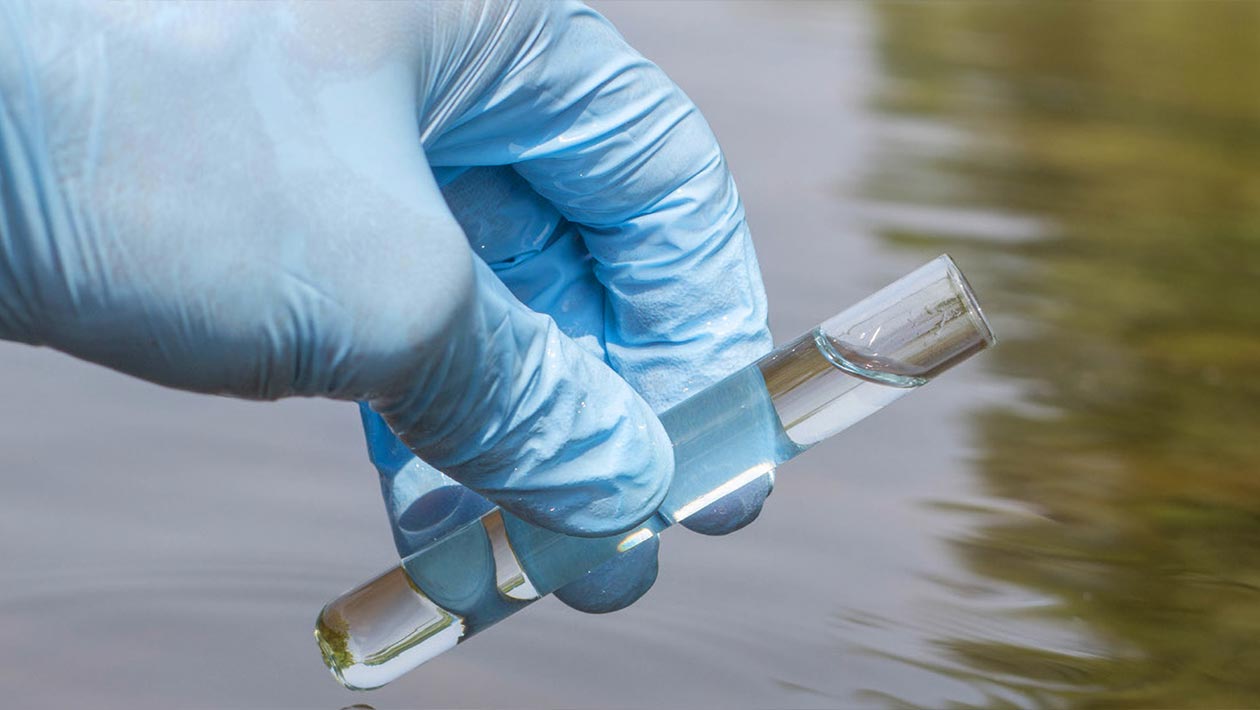
Customer success story: Institute of Coastal Research, Germany
Listen to analytical chemist Lars Hildebrandt share his insights into assessing the distribution and relevance of microplastic particles in rivers and sea systems. You’ll also learn how his team achieved more accurate results in less time.
Watch video
Analysis of microplastics on aluminum-coated filters
This technical overview demonstrates the suitability of aluminum-coated polyester filters for characterizing microplastics using the 8700 LDIR. Aluminum filters enable the efficient sample preparation (filtration) of environmental and water samples, and offer significant cost savings compared to gold-coated filters.
Read now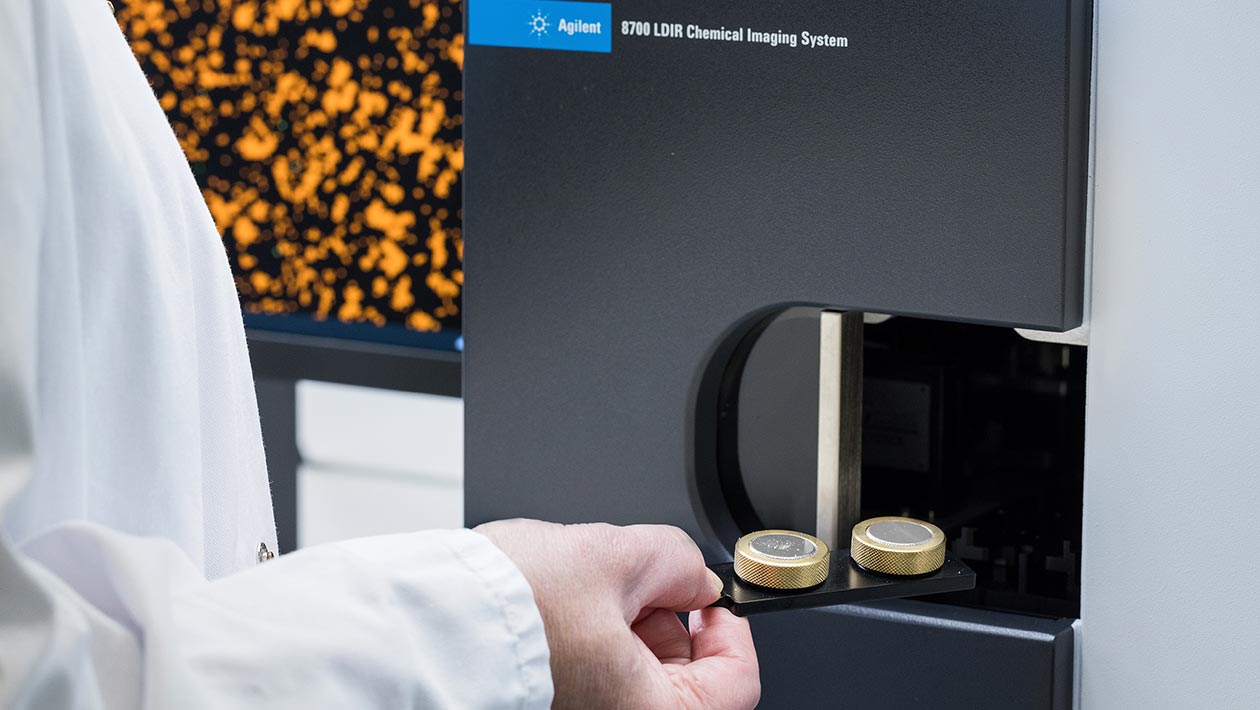
Characterizing microplastics in infant formula
Extracting and isolating microplastics from infant formula can be challenging due to the diverse formulations, ingredients, and components present. This application note demonstrates the importance of quality control in microplastics analysis. In this video, we used an automated workflow to characterize microplastics in two formula brands.
Read more Watch video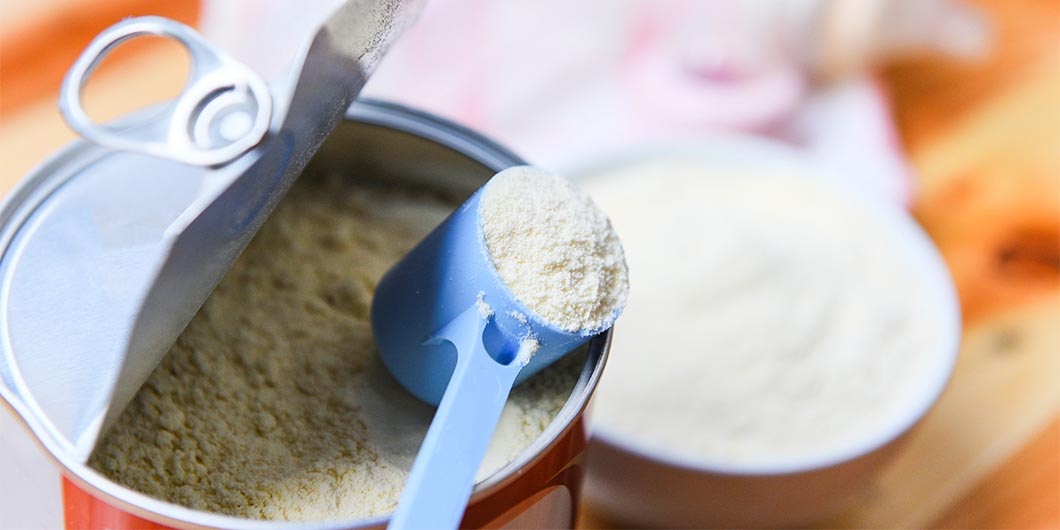
Detecting microplastics in bottled water
This video explains how the Agilent 8700 LDIR can accurately identify and quantify microplastics in bottled drinking water. In this application note, we also explore the ability of the Agilent Cary 630 FTIR spectrometer to investigate the source of microplastic contamination.
Watch video Read more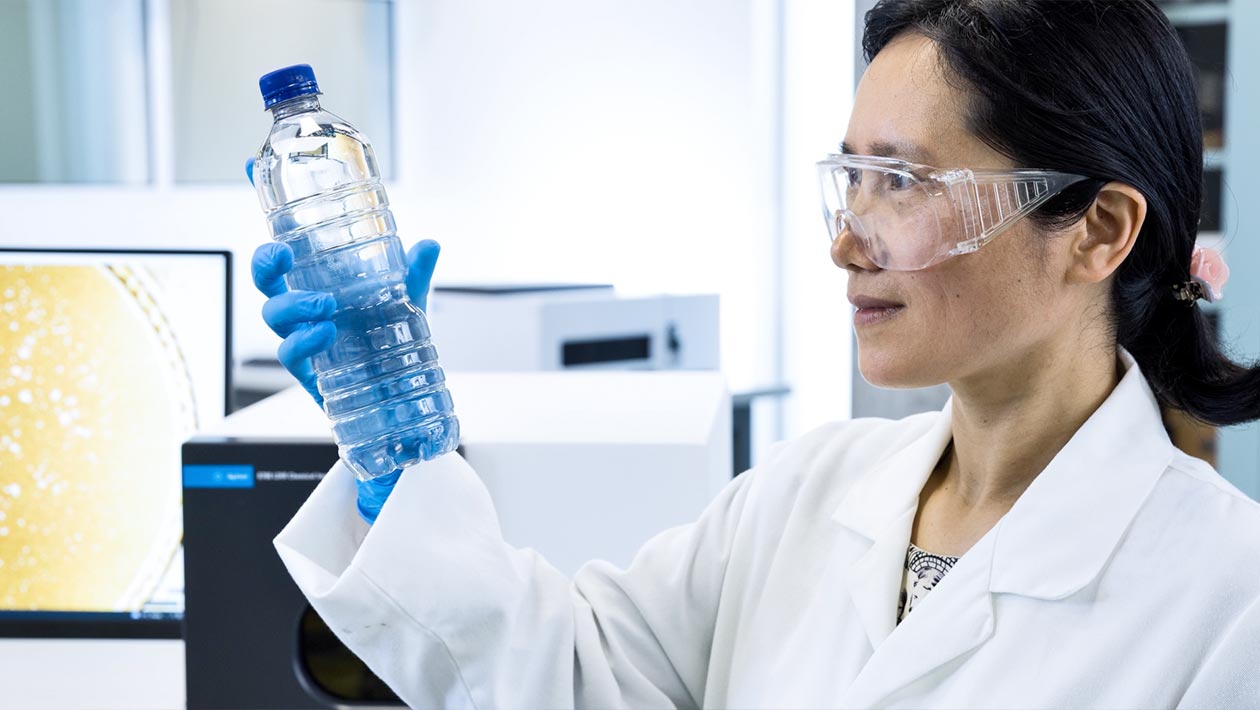
Accurate microplastics analysis in minutes, not hours
The automated Agilent 8700 LDIR lets you obtain high-quality images and spectral data faster than ever before. So you can perform confident large-scale microplastics studies and monitoring activities. This infographic explains how the 8700 LDIR finds the needle in the haystack, and takes a giant leap forward in speed and throughput.
Download now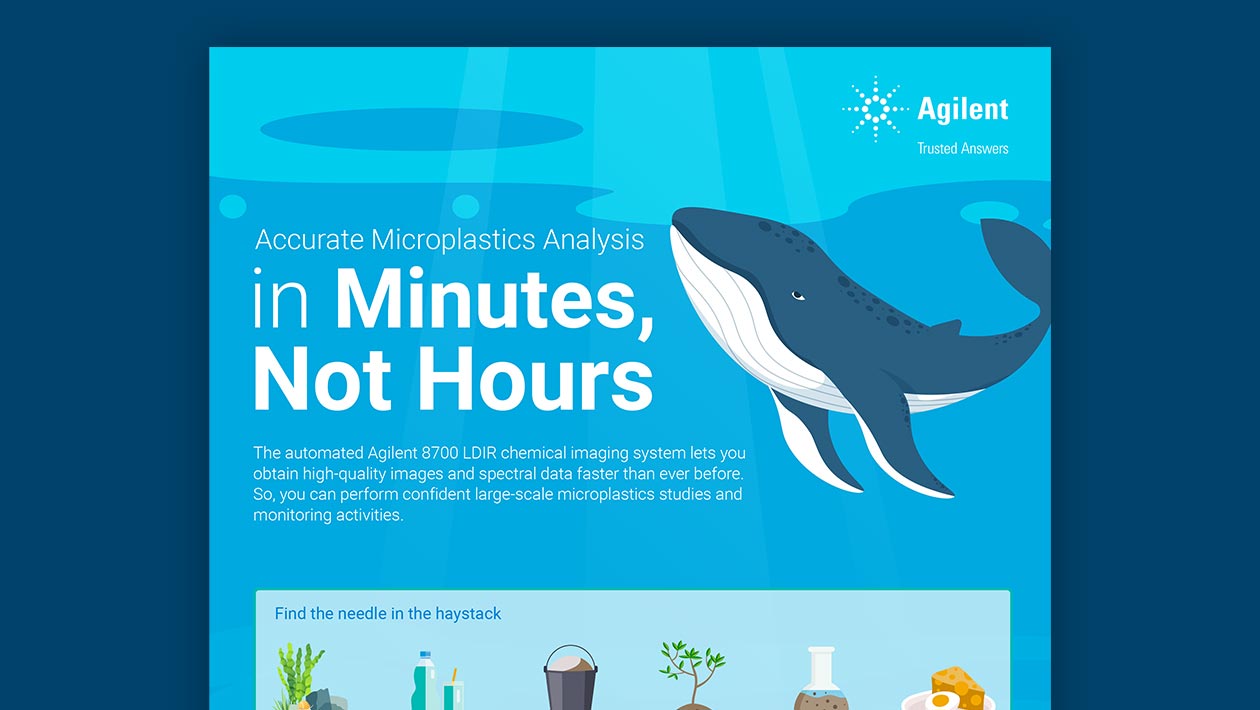
LDIR: A fast and accurate solution for microplastic analysis
In this video, we’ll give you an overview of the microplastics analysis workflow for the Agilent 8700 LDIR. The system’s Agilent Clarity software provides unprecedented workflow automation with flexible sample preparation options.
Watch now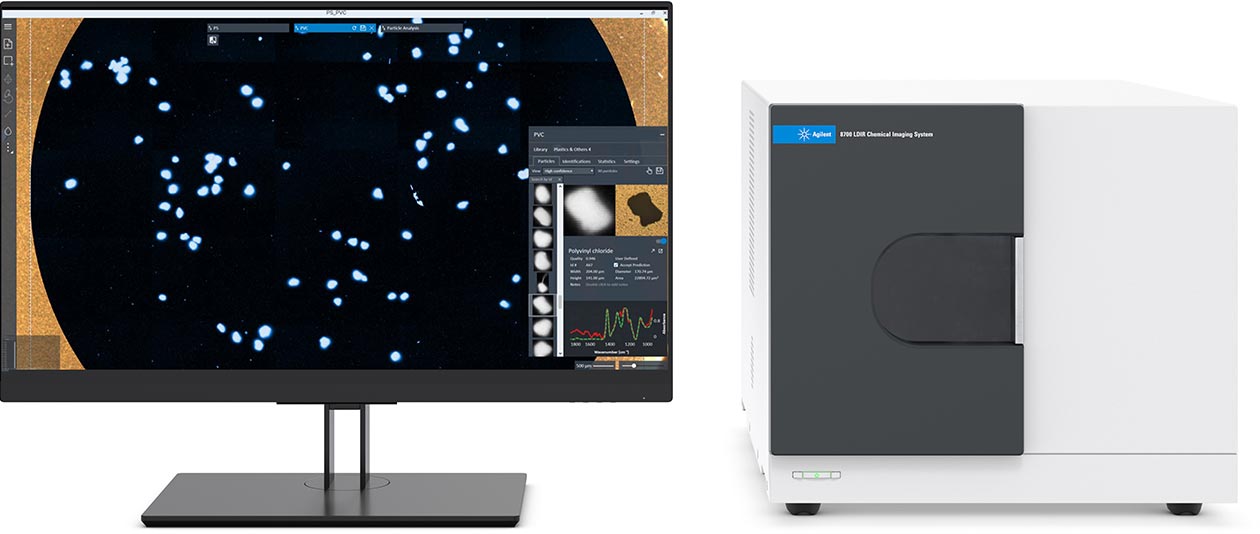
Characterizing microplastics in environmental samples by LDIR and user-generated libraries
This application note identifies the chemical composition of microplastics derived from large pieces of plastic collected from the beaches of Sorrento, Victoria, Australia. Chemical identification was achieved using a fully automated particle analysis method for the 8700 LDIR. The study also demonstrates how easy it is to create a library using Agilent Clarity LDIR instrument control software.
Read now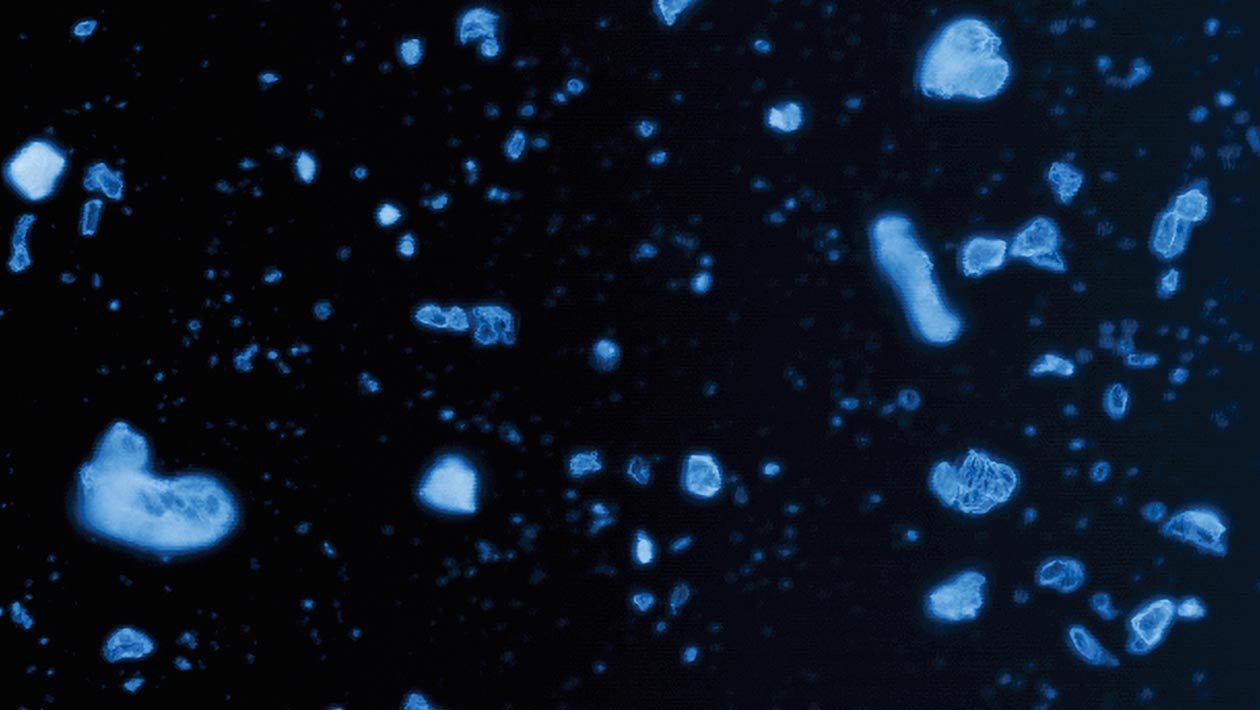
Ready to speed up and simplify your microplastics studies?
Fill out this form to gain exclusive access to our microplastics webinars and resources, which give you the inside scoop on microplastics analysis made easy.
And then, talk to one of our experts and discover how to spend less time and effort on microplastics sample preparation and analysis. They’ll be happy to answer any questions you might have.
